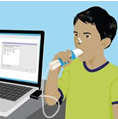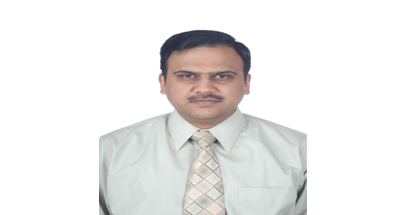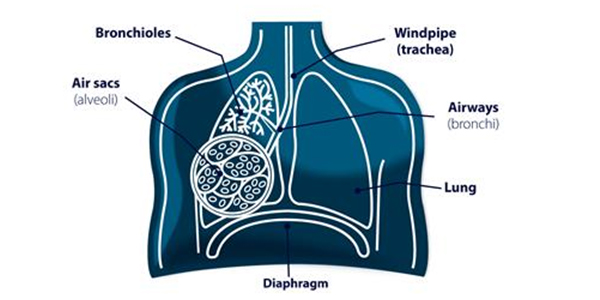Many of us would wonder what the term COPD interprets…? Decoding the term may land you into the different condition of your body affected by certain symptoms. Before we get more into the details of COPD, let’s tell you that today is World COPD Day.This year the theme for the day is “It’s not too late…” which focuses on applying preventive measures in the nick of time.
Nagpur Today gets on board city’s renowned Pulmonologist Dr. Rajesh Swarnakar to detail on the COPD, its causes and prospective prevention from the disorder…
COPD is a highly prevalent disease. It is the third leading cause of death in the world. It has a large impact on quality of life for patients and their families, and kills millions of people worldwide. World Health Organisation (WHO) estimates 210 million individuals worldwide have COPD and total deaths are expected to increase more than thirty percent in the next ten years. Yet perhaps one-quarter to one-half of people with clinically significant COPD don’t know they have it.
In Nagpur too the specialists receive alarming number of patients suffering from the disorder. Suprisingly, a large number of affected people in the city do not recognise this ailment that has been troubling them since long.
COPD, or Chronic Obstructive Pulmonary Disease, is an umbrella term used to describe progressive lung diseases including emphysema (permanent destruction of the airsacs), chronic bronchitis, non-reversible asthma, and some forms of bronchiectasis. This disease is characterized by increasing breathlessness.
Many people mistake their increased breathlessness and coughing as a normal part of aging which results in the early stages of COPD being often unrecognized. Reducing the burden of COPD worldwide depends on identifying a greater proportion of the people who have developed the disease, and getting them treated.
Despite rapidly rising illness and death rates due to COPD, awareness of COPD among the general public and those at greatest risk for the disease remains low.
It is now recognized that 10-20% of COPD patients have never smoked! Furthermore, only a fraction of smokers develop COPD, suggesting that both genetic and environmental factors influence the risk of developing COPD.
| SymptomsBreathlessness, chronic coughing and wheezing.
Causes Smoking, second-hand or passive smoke, occupational dust and chemicals, air pollution and genetic factors. In our country women in rural areas get COPD due to exposure to biomass fuel while cooking from smoky chullha in an illventilated kichen at innermost space of the house. Prevention
Health Challenges due to COPD
|
However, in people at risk for COPD, a simple, painless breathing test called spirometry can help diagnose the disease. This test measures the amount of air a person can breathe out, and the amount of time taken to do so. Today, spirometry is widely available to specialist doctors. But looking at the prevalence of the disease spirometry should also be available in primary care settings, facilitating earlier diagnosis of COPD. Finding COPD early gives the best chance to prevent further lung damage.
Who should get spirometry?
The guidelines recommend that any person at risk for COPD should have a spirometry test. That means anyone who: Is over 40 years old, Has a history of exposure to COPD risk factors, such as tobacco smoke, other kinds of smoke, or dusts and fumes encountered on the job and Has symptoms of COPD, such as a chronic cough, bringing up phlegm or mucus most days, and feeling short of breath |
However, treatments are available to help people at all stages of disease feel better and live a more active life. Strategies include vaccinations against influenza and pneumonia, inhaled bronchodilator drugs (drugs which open up the airways and reduce breathlessness), pulmonary rehabilitation, oxygen therapy, and surgical interventions. Glucocorticoids and antibiotics are regularly used to treat acute exacerbations (attacks) of COPD.
– Dr Rajesh Swarnakar
(Dr Rajesh Swarnakar is a Pulmonologist,a specialist in managing Lung Diseases and Fellow of American College of Chest Physicians.He did his post graduation from All India Institute Of Medical Sciences(AIIMS)Delhi .He is currently Director and Consultant of Respiratory,Critical Care & Sleep Medicine at Getwell Hospital & Research Institute,Dhantoli,Nagpur )














